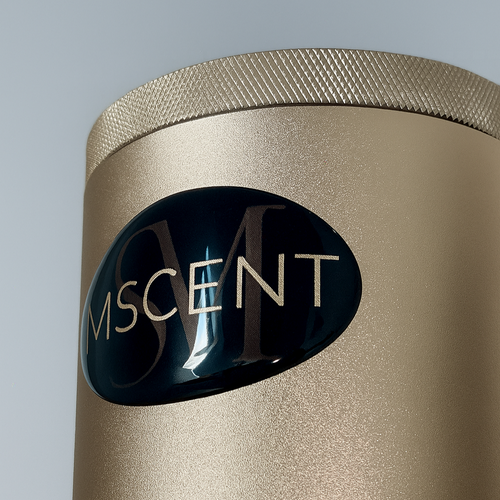Airport
 Why is it essential to install scent diffusers in an airport?
Why is it essential to install scent diffusers in an airport?
Airports are places of passage for millions of travelers each year, often associated with stress, fatigue, and rush. Olfactory marketing, through the use of scent diffusers, can play a decisive role in transforming the passenger experience, improving their well-being, and strengthening the airport's image. Here's why it's essential to install scent diffusers in an airport and why scent marketing is particularly important in this context.
Improve passenger experience and reduce stress
Air travel is often a source of stress for passengers: queues, security, delays, etc. In this environment, smell plays a key role in influencing travelers' mood and perception. Adding soothing scents, such as lavender , sandalwood , or fresh scents like mint , can create a calmer and more pleasant atmosphere. This helps reduce anxiety, make the wait more pleasant, and transform the airport into a more welcoming and serene place.
Create a pleasant and memorable atmosphere
Scent is a powerful sense and often linked to memory. In an environment where passengers may feel rushed or tired, using a pleasant fragrance can enhance positive perceptions of the airport. A subtly diffused scent can make the space more memorable and enjoyable, helping travelers associate their experience with a sense of comfort and well-being. It's an effective way to transform the airport into a more welcoming space and make a positive first impression upon arrival.
Dispel bad odors and improve perceived cleanliness
Airports are high-traffic areas, which can lead to unpleasant odors (kitchen, passenger traffic, storage areas, etc.). Scent diffusers help mask these unwanted odors and maintain a fresher, cleaner atmosphere. This contributes to the perception of cleanliness and the image of the airport as a well-maintained place. The fragrant air then becomes a sign of care and attention to the passenger experience.
Strengthening the airport's identity
Scent marketing allows an airport to develop a distinct olfactory identity that can be associated with its brand image. For example, some airports choose specific fragrances to evoke elegance, modernity, or luxury, while others may opt for exotic or soothing scents. This signature scent becomes a unique way to welcome passengers and create a consistent and memorable ambiance throughout the airport. Scent becomes an element that reinforces the overall experience and identity of the location.
Create an environment conducive to relaxation and recovery
Many passengers arrive exhausted or stressed, especially after long-haul flights or long connections. Scent diffusers can be installed in relaxation areas, such as lounges, VIP areas, or rest areas, to create an environment conducive to relaxation. Scents like chamomile or ylang-ylang can help relax passengers, allowing them to recover before their next flight. This attention to detail can greatly improve their experience and loyalty.
Why is olfactory marketing important in an airport?
1. Strengthen the airport's brand image
An airport's image isn't limited to its architecture or the quality of its services. The sensory environment, including the fragrances diffused, helps create a unique and cohesive atmosphere. By developing an olfactory identity, an airport can differentiate itself from other airports and make an impression on passengers. For example, a refined and subtle fragrance can associate the airport with an image of luxury, calm, and serenity, thus reinforcing its brand image.
2. Improve customer service perception
Scent marketing directly influences passengers' perceptions of service quality. A pleasant scent helps create a professional, polished, and welcoming atmosphere. This reinforces the idea that the airport cares about passenger well-being, which improves perceptions of service quality. A fragrant environment is perceived as more pleasant and well-kept, which can positively influence passenger satisfaction.
3. Influence emotions and improve the traveler experience
Scent marketing acts as a powerful tool for influencing passengers' emotions and moods. For example, fresh floral scents or pleasant fruity notes can evoke positive memories of vacations or travel. These emotions can help create a more pleasant experience upon arrival at the airport. A pleasant scent also elicits a positive reaction that puts passengers in a good mood, which is crucial for improving their experience in a place that can otherwise be perceived as stressful.
4. Build passenger loyalty and enhance memorization
When passengers associate a pleasant experience with a specific scent, it creates a sensory memory that can remind them of the airport each time they smell that scent elsewhere. This association strengthens their loyalty, as they will tend to return to a place that left them with a positive and memorable feeling. Scent thus becomes a strategic asset for strengthening the relationship between passengers and the airport.
5. Attract passengers to commercial areas
Scent diffusers are not only useful in waiting and check-in areas, but also in commercial areas of the airport. By creating a pleasant atmosphere, scents can attract passengers to shops, restaurants, or lounges, enhancing their mood and sensory experience. For example, gourmand scents can stimulate the appetite and encourage passengers to visit the airport's restaurants or cafeterias.
Conclusion
Using scent diffusers in an airport is essential for improving the passenger experience by reducing stress, creating a pleasant and memorable atmosphere, and strengthening the airport's image. Olfactory marketing allows the airport to differentiate itself, attract passengers, and build loyalty by connecting them with a unique signature scent. Scent thus plays a crucial role in creating a positive atmosphere, influencing both the emotions and behaviors of travelers.





